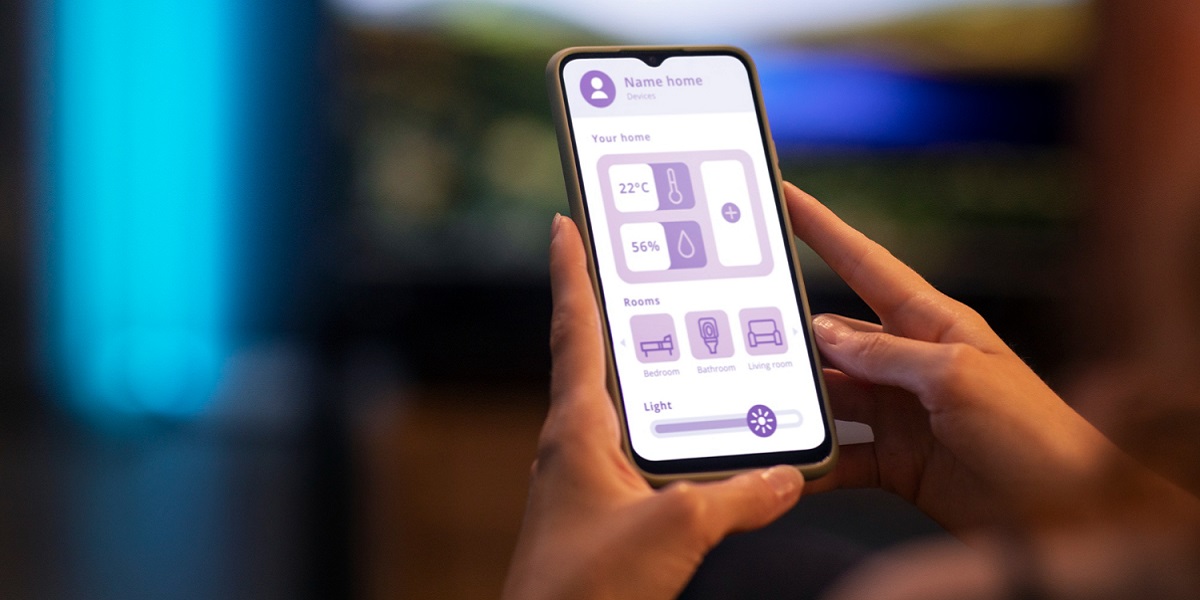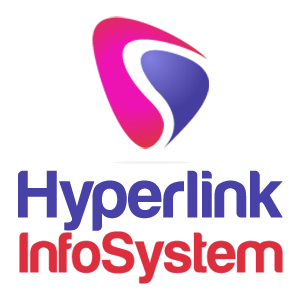
Let’s cut to the chase: You don’t need a mobile app to “keep up with trends” or “look modern.” By 2025, apps will be less about flashy tech and more about solving problems your customers haven’t noticed yet. Think of them as invisible helpers, community builders, and even planet-saving tools.
If you’re still on the fence, here are 20 game-changing reasons your business needs a mobile app in 2025—and none of them are about slapping a “Buy Now” button on a screen.
Forget basic recommendations like “You bought socks—here are shoes!” By 2025, apps will use AI to predict needs before customers realise them.
- AI learns habits: A coffee app notices you order an oat milk latte every Tuesday at 8 AM and nudges you to skip the line.
- Mood-based UX: A meditation app shifts to calming pastel colours if your heart rate spikes during a work call.
- Predictive inventory: Retail apps like Amazon already use AI to pre-ship items to warehouses based on your browsing history. By 2025, even small businesses will adopt this.
Spotify could curate playlists based on your smartwatch data. Hosting a party? It auto-plays upbeat hits from your past gatherings. Feeling stressed? It queues lo-fi beats.
74% of customers ditch brands with impersonal experiences. Apps that “get” users earn loyalty without begging for it.
Future Prediction: AI-powered personalisation will cut customer service costs by 30% as apps handle FAQs and preferences autonomously.
In a world obsessed with 5G, offline functionality will quietly become a superpower. Why? 4.5 billion people still lack reliable internet access.
- Apps will let users browse menus, save orders, or watch tutorials without Wi-Fi.
- Critical for travellers, rural areas, or packed events (like concerts).
Google Maps could let travellers download entire city guides—transit maps, restaurant tips, and phrasebooks—for offline use. No roaming fees, no frustration.
Offline access = reliability. Users stick with apps that work everywhere, not just where signals reach.
Pro Tip: Use frameworks like React Native or Flutter to build offline-first apps cost-effectively.
“But my website works!” Sure, but by 2025, 90% of mobile time will be spent in apps, not browsers.
- Speed: Apps load 2x faster than mobile sites.
- Features: Push notifications, AR try-ons, and loyalty rewards work smoother in apps.
A hair salon app lets clients virtually “try on” hair colours using their camera, book appointments, and prepay—no website needed.
Your competitors’ apps will replace Google searches. Don’t get left behind.
Stat Alert: 60% of users uninstall apps that take over 3 seconds to load. Optimise speed or lose them.
Eco-conscious users want more than recycled packaging. Apps will turn sustainability into a habit.
- Show the environmental impact of purchases (e.g., “This shirt saved 20L of water!”).
- Reward users for eco-friendly choices (e.g., discounts for bringing reusable cups).
Patagonia’s app could tag products with a “Sustainability Score”—tracking water use, carbon footprint, and recycling options.
66% of global consumers pay more for sustainable brands. Apps make it easy to choose you.
Future Trend: Carbon footprint trackers will become as common as calorie counters in fitness apps.
Social media is a noisy playground. Apps will become cosy campfires for niche communities.
- Exclusive content: Members-only tutorials, local meetups, or early access to sales.
- Shared goals: Apps that let users team up (e.g., fitness challenges, group savings).
A running app like Strava could create local clubs where members unlock discounts at sports stores or plan zero-waste races.
People don’t leave communities they helped build. Loyalty becomes automatic.
Pro Tip: Add a “Member of the Month” feature to spotlight active users and boost engagement.
Typing? That’s so 2020. By 2025, users will demand hands-free convenience.
- Voice search: “Find a vegan pizza place nearby with gluten-free crust” while driving.
- Gesture navigation: Shake your phone to reorder groceries or swipe left to skip a recipe step.
A car repair app lets mechanics voice-search tutorials while working under a hood—no greasy fingerprints on screens.
Convenience wins. Apps that adapt to lazy tech habits win loyalty.
Future Prediction: Gesture controls will reduce app abandonment rates by 22% as users prioritise ease over aesthetics.
Data breaches make headlines daily. Apps that prioritise privacy will stand out.
- Biometric logins: Face scans or fingerprints instead of passwords.
- Transparency: Show users exactly how their data is used (e.g., “We track location to show nearby stores”).
A telehealth app offers encrypted video calls and lets patients “fingerprint-lock” sensitive health records.
81% of users say poor data privacy is a dealbreaker. Secure apps become non-negotiable.
Stat Alert: Companies that prioritise privacy see 2x higher customer retention.
AR isn’t just for gaming. Apps will blend real-world and digital experiences.
- Furniture apps: Point your camera to see how a couch looks in your living room.
- Retail apps: Scan a product in-store to watch a tutorial or read reviews.
A makeup brand app scans your face to virtually test foundation shades, then directs you to the nearest store with your exact match in stock.
AR turns shopping into an adventure. Fun = engagement = sales.
Case Study: IKEA’s AR app increased customer purchase confidence by 60%—imagine that impact for your products.
By 2025, the best apps will work quietly in the background, like a helpful roommate.
- Passive data collection: Apps learn from your location, habits, and even weather.
- Predictive actions: Automate tasks without being asked.
A smart home app like Google Nest learns your routine and auto-adjusts lights, thermostats, and even preheats the oven when you’re 10 minutes from home.
People are tired of managing apps. Invisible helpers reduce decision fatigue.
Pro Tip: Start small—add a “smart reminder” feature to your app, like auto-reordering printer ink when levels are low.
Not every app needs 50 features. Small, hyper-focused tools will thrive.
- A coffee shop app only for pre-ordering.
- A Disney World app only for ride wait times and Lightning Lane passes.
- Users hate clutter.
- Micro-apps are cheaper to build and easier to update.
Taco Bell’s “Nacho Fries Alert” app crashed servers because fans obsessed over limited-time alerts.
Takeaway: Micro-apps are perfect for seasonal campaigns or single-use needs (e.g., event tickets).
Paradox alert! The best 2025 apps will reduce screen time.
- Audio-first interfaces: Listen to news summaries while jogging.
- Glanceable widgets: “Your package is 3 stops away.”
Headspace could offer “audio-only” mindfulness sessions for commutes—no need to stare at a screen.
Respect users’ time and eyeballs, and they’ll respect your brand.
Future Trend: Voice-driven apps will grow by 45% as users multitask during commutes or chores.
User-generated content (UGC) isn’t just for TikTok. Let customers co-create your business.
- Crowdsourced solutions: A bike repair app where users upload DIY fix videos.
- Feedback loops: A fashion app lets users vote on next season’s designs.
A home decor app rewards users who upload photos of DIY projects (like upcycled furniture) with store discounts.
People trust peers more than ads. UGC = free marketing + authenticity.
Stat Alert: Brands using UGC see a 29% higher web conversion rate than those relying on traditional ads.
Post-pandemic, users expect apps to care for their well-being.
- Mental health check-ins: A work app suggests breaks if it detects stress in your typing speed.
- Emergency tools: A hiking app alerts rangers if you wander off-trail.
A construction site app uses wearable device data to warn workers about unsafe noise levels or heat risks.
Safety isn’t a feature—it’s a responsibility. Protect users, and they’ll protect your reputation.
Future Prediction: OSHA will mandate safety app integrations for high-risk industries by 2026.
Loyalty programs are broken. Apps will fix them with creativity.
- Dynamic rewards: Gas discounts adjust based on real-time prices.
- Gamified perks: “Mystery rewards” for every 5th coffee scan.
Starbucks’ app drives 50% of sales because users earn stars and skip lines.
Deep Dive: The app’s “pay ahead” feature saves users 8 minutes per visit, time that adds up to 24 hours annually for daily customers.
Physical + digital = phygital. Apps will merge both worlds.
- Scan concert tickets to unlock AR backstage content.
- Solve in-app puzzles to unlock secret store discounts.
A LEGO Store app lets users scan sets in-store to watch 3D animated builds, then share creations online to win exclusive mini-figurines.
Phygital creates FOMO (fear of missing out). Users engage before the magic disappears.
Stat Alert: Brands using AR see a 40% higher engagement rate than those relying on static ads.
Global markets are now local.
- Voice translation: Chat smoothly with international customers.
- Text adjustments: Swap idioms (e.g., “football” → “soccer” for U.S. users).
A UNICEF aid app translates disaster relief instructions in real time for refugees using regional dialects.
Localisation isn’t optional—it’s expected.
Pro Tip: Use tools like Lokalise or Smartling to automate translations without hiring linguists.
Users drown in subscriptions. Stand out with flexibility.
- Pay-per-use: A yoga app offers drop-in classes for $5 instead of monthly plans.
- Shared plans: Split a recipe app subscription with friends.
Flexibility = happier customers.
Case Study: Adobe’s shift to subscriptions boosted revenue, but smaller apps can counter with hybrid models (e.g., “Subscribe or pay-per-feature”).
Big data isn’t just for corporations.
- Social listening: Analyse hashtags and reviews to spot demand.
- Localised insights: A bakery app notices “matcha croissant” searches spiking in Austin.
A Target app could stock retro roller skates after spotting Pinterest trends in your area.
Why It Matters:
Predict trends, and you’ll never run out of stock.
Pro Tip: Train your app with free tools like Google Trends or AnswerThePublic to identify rising keywords.
Privacy isn’t optional—it’s a selling point.
- Data ownership: Let users control what’s collected.
- Encrypted chats: For apps with messaging features.
A kids’ learning app lets parents approve data tracking (e.g., progress, not location) and displays a “Parental Shield” badge.
Privacy sells. Turn it into your slogan: “Your data stays yours.”
Stat Alert: 78% of users will pay extra for apps with “no data-sharing” guarantees.
Networking is going digital—finally.
- NFC integration: Tap phones to swap contact details.
- AR profiles: Point your camera at a logo to see a 3D portfolio.
A LinkedIn micro-app lets users tap phones at conferences to share profiles, schedule chats, or exchange portfolio links.
First impressions matter. Ditch paper and wow clients instantly.
Future Prediction: NFC-enabled business apps will reduce physical card waste by 70% by 2027.
Before launching, ask:
1. Does it solve a future problem?
2. Can it work offline?
3. Does it respect privacy?
4. Is it simple enough for a 5-year-old?
5. Does it spark joy?
By 2025, mobile apps won’t be optional. They’ll be bridges between you and your customers, solving problems, building trust, and creating joy in ways websites and social media can’t.
The question isn’t “Should I build an app?” It’s “What future problem will my app solve?” Partnering with the best mobile app development company ensures your tool is built to evolve with tomorrow’s needs, so you’re not just keeping up, but leading the way.
